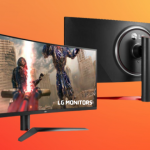Introduction
In the realm of gaming and high-performance computing, frame rates and refresh rates are critical factors that influence the overall visual experience. The question “Can you run 120 FPS on a 60Hz monitor?” is one that many gamers and tech enthusiasts ponder. This article delves into the mechanics of frame rates and refresh rates, the potential benefits and limitations of running high FPS on lower Hz monitors, and how to optimize your setup for the best performance.
Understanding Frame Rate (FPS) and Refresh Rate (Hz)
Frame Rate (FPS)
Frames per second (FPS) measures how many individual frames are displayed per second in a video or game. Higher FPS results in smoother motion, providing a more fluid visual experience, especially in fast-paced gaming environments. For instance, 30 FPS is often considered the minimum for smooth gameplay, while 60 FPS is preferred for a more seamless experience. Professional gamers and those with high-end systems often aim for 120 FPS or higher to gain a competitive edge and enjoy ultra-smooth visuals.
Refresh Rate (Hz)
Hertz (Hz) measures how many times per second a monitor refreshes the image on the screen. A 60Hz monitor refreshes 60 times per second. This refresh rate is crucial because it dictates how often the display can update with new information. Higher refresh rates, like 120Hz or 144Hz, can show more frames per second, leading to a smoother and more immersive visual experience. However, the refresh rate must match or exceed the FPS your system is outputting to avoid issues like tearing.
Can You Run 120 FPS on a 60Hz Monitor?
The short answer is yes, but with significant caveats. While a computer can output 120 FPS, a 60Hz monitor can only display 60 frames per second. The extra frames are rendered but not shown, which can result in tearing and other visual artifacts. This discrepancy occurs because the monitor cannot refresh fast enough to keep up with the GPU’s output, leading to a mismatch between what is rendered and what is displayed.
Implications of Running Higher FPS on Lower Hz Monitors
Screen Tearing
Screen tearing is a common issue when running higher FPS on a lower Hz monitor. It occurs when the monitor displays parts of multiple frames in a single refresh cycle, resulting in a disjointed image. This can be particularly jarring in fast-paced games where rapid movements are common. Tearing happens because the frame rate of the game and the refresh rate of the monitor are out of sync.
Input Lag
Higher FPS can still reduce input lag, making controls more responsive even on a 60Hz monitor. Input lag refers to the delay between an input (like pressing a key or moving a mouse) and the corresponding action occurring on screen. Higher FPS means that inputs are processed more frequently, which can lead to a more responsive feel, even if the monitor can’t display every frame.
The Technology Behind Frame Rates and Refresh Rates
Understanding how frame rates and refresh rates interact is crucial. Technologies like V-Sync and G-Sync help synchronize the frame rate with the refresh rate to minimize tearing and lag.
V-Sync and G-Sync Explained
V-Sync (Vertical Sync)
Vertical Sync (V-Sync) is a technology that synchronizes the frame rate of the game with the refresh rate of the monitor. When enabled, V-Sync limits the frame rate to match the monitor’s refresh rate, reducing tearing but potentially increasing input lag. This is because V-Sync can cause the system to wait for the monitor to be ready to display the next frame, leading to delays.
G-Sync/FreeSync
G-Sync and FreeSync are adaptive sync technologies developed by NVIDIA and AMD, respectively. These technologies dynamically adjust the monitor’s refresh rate to match the frame rate being output by the GPU, providing smoother visuals and reducing tearing. Unlike V-Sync, adaptive sync technologies can eliminate tearing without introducing significant input lag, offering a more seamless experience.
Benefits of Running Higher FPS Than Monitor Refresh Rate
Reduced Input Lag
Even if the monitor can’t display all frames, a higher FPS can make inputs feel more responsive. This is because the system processes inputs more frequently, reducing the delay between an action and its visual representation on screen. For competitive gamers, reduced input lag can be a significant advantage, improving reaction times and overall performance.
Future-Proofing
Running higher FPS can prepare your system for future monitor upgrades with higher refresh rates. Investing in a powerful GPU and achieving high frame rates ensures that your system will be ready to take full advantage of a higher refresh rate monitor when you upgrade, extending the lifespan and relevance of your current hardware.
Limitations and Drawbacks
Visual Artifacts
When running a higher FPS than your monitor’s refresh rate, you may experience visual artifacts like tearing and stuttering. Tearing occurs when the monitor displays parts of multiple frames simultaneously, while stuttering happens when frames are dropped or displayed out of order. Both artifacts can detract from the visual experience and make gameplay less enjoyable.
Wasted Resources
Extra frames that aren’t displayed can be seen as wasted computational effort. If your GPU is rendering more frames than your monitor can display, the additional processing power is not being fully utilized. This can lead to higher power consumption and unnecessary wear on your hardware without providing a noticeable benefit.
How to Optimize Your System for Best Performance
Adjusting settings and using appropriate technologies can help optimize performance:
- Enable V-Sync or G-Sync: To reduce tearing and ensure a smoother visual experience.
- Lower In-Game Settings: To maintain high FPS without overtaxing your system. Reducing settings like shadows, textures, and post-processing effects can help achieve higher frame rates without compromising too much on visual quality.
- Update Drivers: Ensure your graphics card drivers are up-to-date to benefit from the latest optimizations and features.
- Monitor Settings: Adjusting your monitor settings, such as response time and overdrive, can also improve performance.
Gaming Experience with Higher FPS on a 60Hz Monitor
The gaming experience can be subjective. Some gamers might prefer higher FPS for smoother input responses, while others might prioritize synchronized visuals. Ultimately, the best setup depends on personal preference and the type of games you play. For example, competitive shooters might benefit more from higher FPS and reduced input lag, while story-driven games might prioritize visual fidelity and synchronized frames.
Comparing Different Refresh Rates and Frame Rates
Testing different combinations can help you find the best balance for your setup. A 120Hz monitor running at 120 FPS will undoubtedly provide a better experience than a 60Hz monitor at 60 FPS. However, achieving this balance requires both a capable monitor and a powerful system that can consistently deliver high frame rates.
Practical Example
Imagine playing a fast-paced game like a first-person shooter on a 60Hz monitor. At 60 FPS, the game feels smooth and responsive. However, if your system can output 120 FPS, enabling V-Sync or G-Sync might improve the experience by reducing tearing and making the game feel more fluid, even though the monitor can’t display every frame.
The Role of Hardware in Achieving High FPS
Graphics Card
A powerful GPU is essential for rendering high FPS. Modern GPUs like NVIDIA’s RTX series or AMD’s RX series are designed to handle demanding games at high resolutions and frame rates. Investing in a high-end graphics card can ensure your system can achieve and maintain high FPS in current and future games.
CPU
The processor must also be capable of handling the game’s demands. A strong CPU can prevent bottlenecks and ensure smooth gameplay by efficiently managing tasks like physics calculations, AI behavior, and game logic. Multi-core processors with high clock speeds are particularly beneficial for gaming.
Monitor
Ultimately, the monitor determines how many frames you actually see. Higher refresh rate monitors, such as those with 120Hz, 144Hz, or even 240Hz, can display more frames per second, resulting in smoother and more immersive visuals. Investing in a high-refresh-rate monitor can significantly enhance your gaming experience.
Future Trends in Display Technology
Higher Refresh Rates
Monitors are trending towards higher refresh rates, with 144Hz and 240Hz becoming more common. As technology advances, we can expect even higher refresh rates to become standard, providing smoother and more responsive visuals for gaming and other applications.
Variable Refresh Rates
Technologies that dynamically adjust refresh rates are improving. Adaptive sync technologies like G-Sync and FreeSync are becoming more widespread, and future developments may offer even better synchronization between frame rates and refresh rates, further reducing visual artifacts and improving the overall experience.
Common Misconceptions About FPS and Hz
More FPS Always Better?
Not necessarily, as monitor limitations can negate benefits. While higher FPS can reduce input lag and improve responsiveness, if your monitor cannot display the extra frames, the visual benefits are limited. It’s essential to balance FPS with your monitor’s capabilities to achieve the best experience.
Higher Hz Always Needed?
Depending on the use case, 60Hz may suffice for non-gaming applications. For everyday tasks like browsing, office work, and media consumption, a 60Hz monitor is often adequate. Higher refresh rates are primarily beneficial for gaming and professional applications like video editing and graphic design, where smooth motion and reduced latency are critical.
FAQs
Can I notice the difference between 60 FPS and 120 FPS on a 60Hz monitor?
No, because the monitor can only display up to 60 FPS, though input lag might be reduced. The visual difference is limited by the monitor’s refresh rate, but the reduced input lag can still provide a more responsive feel.
Will running higher FPS damage my 60Hz monitor?
No, it won’t damage the monitor but can cause tearing and stuttering. Running higher FPS than your monitor’s refresh rate does not harm the hardware, but it can lead to visual artifacts that detract from the experience.
Is upgrading to a higher refresh rate monitor worth it?
Yes, especially for gaming, as it can provide a smoother and more responsive experience. Higher refresh rate monitors can display more frames per second, resulting in smoother motion and reduced input lag, which is particularly beneficial for fast-paced games.
Does V-Sync help with higher FPS on a 60Hz monitor?
Yes, it can reduce screen tearing by capping FPS to the monitor’s refresh rate. However, it may introduce input lag, so it’s important to test and see if the benefits outweigh the drawbacks for your specific use case.
What is the best FPS for a 60Hz monitor?
60 FPS is optimal for a 60Hz monitor to match the refresh rate. This ensures smooth and synchronized visuals, reducing the likelihood of tearing and stuttering.
Can software solutions improve performance on a 60Hz monitor?
Yes, enabling sync technologies and optimizing game settings can enhance the experience. Adjusting in-game settings, updating drivers, and using adaptive sync technologies can help achieve a smoother and more enjoyable visual experience.
Conclusion
While you can technically run 120 FPS on a 60Hz monitor, the benefits are limited due to the monitor’s refresh rate. Understanding the interplay between frame rates and refresh rates, and using technologies like V-Sync and G-Sync, can help optimize your gaming and viewing experience. For those seeking the ultimate in smooth visuals, upgrading to a higher refresh rate monitor is a worthwhile consideration.


